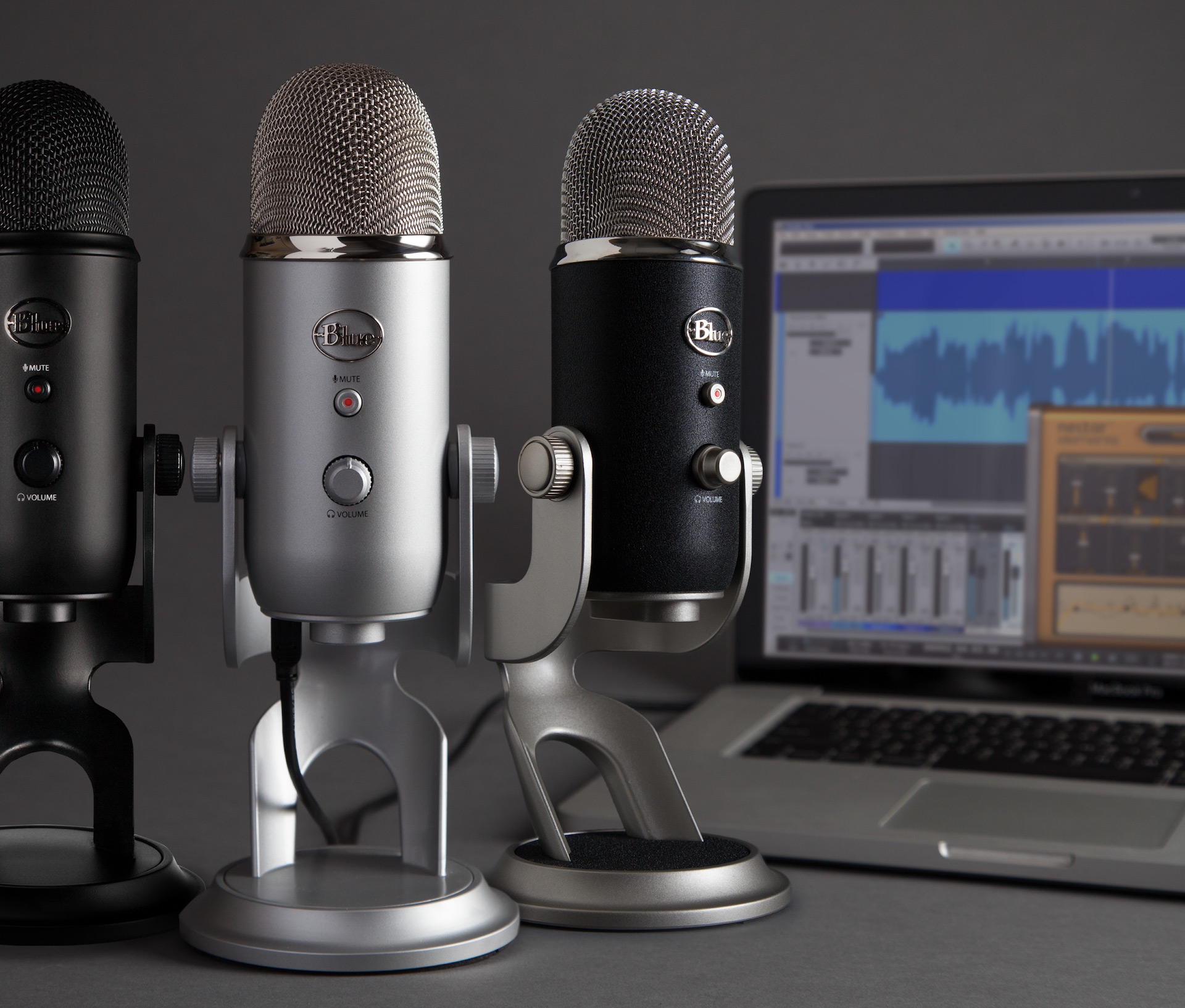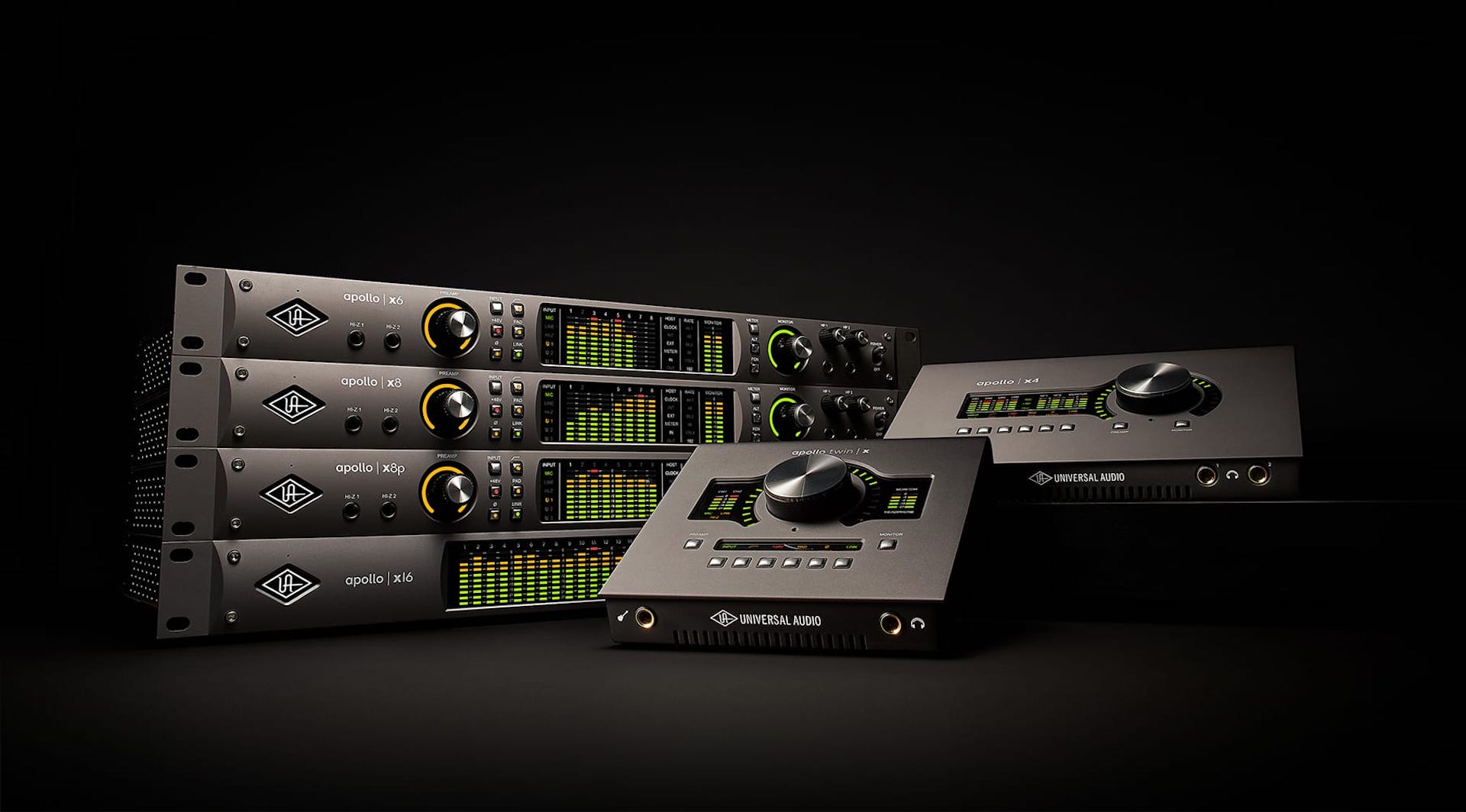Over the past few years, podcasting has grown from a niche content format that no one took seriously to a mainstream content channel ripe with top notch shows and sponsors, and millions of listeners around the world. In 2020, the podcasting industry has evolved to the point where anyone with a microphone and an idea can start a podcast with almost zero friction.
In fact, it’s a three-step process – hook up a mic, record your episode, and distribute it. In this article, we’ll discuss the first step. Specifically, you’ll learn how audio interfaces help you connect a microphone to your computer, and which audio interface is the best option for podcasting.
What is an Audio Interface?
If you’re just getting into podcasting, you may be wondering what an audio interface is and why you need one. An audio interface is a hardware device that connects your microphone to your computer, and converts your microphone’s analog signal into digital data that your computer understands.
Audio interfaces have XLR inputs, which means they are compatible with pretty much all analog microphones out there. I say “analog microphones” because digital microphones exist too. Usually, they’re terminated with USB a connector. USB microphones technically have a built-in audio interface with the necessary processing chips to convert analog audio to digital audio. With this in mind, you’re probably asking yourself why you would ever get a dedicated audio interface instead of a convenient USB microphone for podcasting.
Long story short, USB microphones don’t always sound great for podcasting. A few months ago, I wrote about my personal podcasting setup where I shared some insight into podcasting microphones. The Shure SM7B and Electro-Voice RE20, two industry heavyweights, are widely regarded as the best microphones for podcasting and other spoken word use cases.
In addition to being able to render the “radio sound” that we all know and love, the RE-20 SM7B also have amazing off-axis rejection thanks to their dynamic design. If you don’t have a purpose-built soundproof recording studio (which most podcasters probably don’t), off-axis rejection really helps improve the perceived quality of your podcast recording.

The Blue Yeti series is not the best choice for serious podcasters.
The majority of USB microphones on the market, like the ever-popular Blue Yeti, do not have good off-axis rejection because they utilize a condenser design instead of a dynamic one. I don’t have anything against USB microphones – in fact, I own a Blue Yeti myself for more casual use cases like video calls. I think they’re fine for beginners who are unsure if they want to commit to podcasting.
This article is about the best audio interfaces for podcasting though. Since USB microphones technically have built-in audio interfaces, I wanted to explain why I don’t recommend them if you’re looking for serious podcasting equipment. Now that we’ve established why it’s important to get a dedicated audio interface, let’s take a look at the best audio interfaces for podcasters.
What Makes a Good Audio Interface for Podcasting?
Now that we’ve discussed what an audio interface is, let’s move on to what makes an audio interface apt for podcasters. For me, an audio interface for podcasting should have three key characteristics – high quality preamps, stable software drivers, and zero-latency DSP-powered effects.
High Quality Preamps
Audio interfaces come with built-in microphone preamps that amplify a weak microphone signal to achieve a better signal-to-noise ratio before digital conversion. In other words, you won’t be able to do much with a microphone signal that hasn’t been amplified.
For me, a high quality microphone preamp is very important for spoken word use cases like podcasting – much more so than for music recording. The reason for this is simple. A podcast is comprised of your voice and nothing else. There aren’t drums, guitars, and other instruments to divert attention away from a noisy low-quality microphone preamp.
Luckily, the majority of consumer-level audio interfaces have pretty decent preamps that are powerful enough to drive most microphones. With that said, dynamic microphones like the Shure SM7B and Electro-Voice RE20 are very power-hungry when it comes to microphone gain.
If you want to use these microphones for podcasting, you’ll need an audio interface that provides 60 dB of clean gain.
Stable Software Drivers
Few things in life are more frustrating than hearing glitchy audio halfway through an awesome podcast recording session. Imagine you’re in the middle of an engaging conversation with a special guest. Suddenly, you start hearing clicks and pops in your podcasting headphones.
Not only is this situation awkward and unprofessional because both you and your guest know the recording has probably been ruined, it also has the potential to completely kill the momentum of the conversation.
Why would you want to risk this?
To save a few bucks?
There are a lot of audio interfaces out there. I’ve personally used dozens of models over the years. Many of them don’t have reliable audio drivers. Keep reading if you want to find out which audio interface will always provide your podcast with a stable recording experience.
Zero-Latency DSP-Powered Effects
Another aspect of a good audio interface for podcasting is zero-latency audio effects. A zero-latency audio effect is an EQ, compressor, limiter, or any other audio manipulation processor that doesn’t add additional perceived latency to the signal chain. In simple terms, with zero-latency audio effects, you won’t hear any lag in your headphones after speaking into your microphone.
Zero-latency audio effects are made possible by dedicated DSP (digital signal processing) chips embedded in an audio interface. Compared to the general purpose CPU in your laptop, these specialized chips are purpose-built and extremely efficient at processing audio. For me, using zero-latency effects for podcasting is a no-brainer for three reasons.
- Having access to high-quality zero-latency EQs, limiters, and compressors means you can record a “radio-ready” voice straight into your computer. This reduces the need for further mixing in post-production.
- Hearing your “radio voice” in your headphones during the recording process with no perceived lag is just plain cool. This can in turn make you a more confident and professional-sounding host – this is a good thing for both your brand and your listeners.
- In today’s post-COVID world, live webinars and streams as an educational content format seem to be picking up steam (I recently hosted one myself). Webinar tools like Zoom don’t have audio processing tools built in. With a DSP-equipped audio interface, you can add high quality zero-latency effects to take your stream’s production quality to the next level.
Universal Audio Arrow and Apollo
Now that we’ve established that a good audio interface for podcasting should have high-quality preamps, stable software drivers, and zero-latency DSP-powered effects, the only models that offer this unique combination of features are Universal Audio’s Arrow and Apollo audio interfaces.
Universal Audio Arrow
The Universal Audio Arrow is the audio interface I currently use for podcasting. It packs two high-quality microphone preamps and a single-core DSP chip into a portable form factor that’s very convenient for traveling. Furthermore, it connects to my 16” MacBook Pro via low-latency Thunderbolt 3, which means I get great performance without having to worry about USB adapters.

The Universal Audio Arrow's built-in DSP emulations are stellar podcasting.
Universal Audio Apollo Series
If you’re looking for an audio interface with more microphone inputs and DSP power for recording multiple podcast guests, I’d recommend looking at the Universal Audio’s Apollo series. The Apollo line of Thunderbolt 3 audio interfaces is comprised of the Twin X, x4, x6, x8, and x8p.

Universal Audio's extensive line of Apollo audio interfaces.
The Apollo Twin X has two microphone inputs with your choice of dual-core or quad-core DSP chips. For the most demanding podcasters with multiple co-hosts or guests, the Apollo x8p comes with eight mic inputs and a six-core DSP chip. The Apollo x6, x8, and x8p are also rack-mountable, which makes them ideal for and easy to install into existing recording studio configurations.
The Best UAD Plugins for Podcasters
Universal Audio’s library of zero-latency audio effects consists of over 100 plugins, many of which are faithful recreations of legendary vintage hardware. With so many to choose from, you may be wondering which UAD plugins will help you produce a better-sounding podcast.
After trying a variety of Universal Audio zero-latency plugins, here are my top plugin recommendations for podcasters.

UAD's API Vision Channel Strip and Teletronix LA-2A are great for podcasters.
API Vision Channel Strip
The API Vision Channel Strip is a full-blown recreation of API’s legendary analog consoles. It contains a variety of modules including the 212L preamps, 215L low/high-pass filter, 235L gate/expander, 225L compressor/limiter, and a 550L shaping EQ. For my podcasts, the API Vision Channel Strip sits at the beginning of my effects processing signal chain.
- I use the 215L high-pass filter to cut out unnecessary mud.
- I use the 225L compressor to add some light compression.
- I use the 235L gate to get rid of low-volume background noise. When used correctly, this is a very useful feature that can help you achieve a super clean recording with no background noise for your podcast.
- Finally, I use the 550L to bump up the low-mids and highs.
Teletronix LA-2A
The Teletronix LA-2A is another classic hardware processor. UAD did a great job modeling the original unit into a zero-latency plugin for its line of audio interfaces and satellite processing units. I use the LA-2A after the API Vision Channel Strip to level out the audio signal.
The LA-2A is pretty simple to use for podcasting purposes. I turn up the “Peak Reduction” knob until I see -8 to -10 dB on the VU meter – this means I’m reducing the dynamic range of my voice by 8 to 10 dB. After that, I adjust the “Gain” knob until I see an output level that gives me -6dB peaks in Audio Hijack, my audio recording application of choice.
Summary
Universal Audio’s line of DSP-powered audio interfaces is undoubtedly the best choice for podcasters. Not only do they ship with excellent microphone preamps, they also enable you to process audio with world-class zero-latency plugins. Between the Universal Audio’s Arrow and Apollo audio interfaces, you should be able to find an audio interface that fits your podcasting needs.
If you have any questions about UAD audio interfaces and how to use Universal Audio zero-latency plugins to improve the sound quality of your podcast, feel free to reach out to me on Twitter or send me an email.